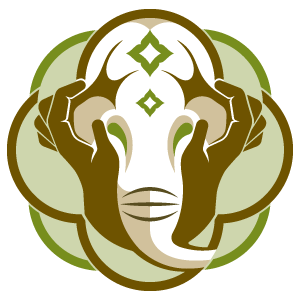The Ankus
The following is an article written by Elephantstay staff members, Ewa Narkiewicz, Communications Director and Michelle Reedy, Operations Director. We are grateful for their permission to use this on our website to educate others about the elephant guide.
Thai people understand the world in symbolic terms…
The elephant God, Ganesh, is often depicted holding an ankus
The elephant takaw is a tool that has great meaning beyond its superficial use. It represents ancient teachings and has cultural significance that western values ignore. Too often western culture only sees the takaw in visual terms. Elephant culture in the west is virtually non existent. There is not the thousands of years of history of elephants living with people so it is difficult for western society to understand how the takaw is used and its significance to Thai elephant culture.
The takaw (bullhook or ankus as it is also known) is a much maligned and misunderstood instrument, probably because of its appearance. In elephant-keeping cultures where the takaw is standard, good mahouts very rarely use their takaws - or at least very rarely use them as it appears they must be used, in a slashing or stabbing motion. In fact, the takaw, is simply a light stick with a metal head shaped to a point. Even the point has a very subtle and gentle purpose; each mahout will have his takaw forged so that it ‘grabs’ elephant skin perfectly to his taste, allowing him to both extend his reach and to pull or tug into himself. The mahout, even afoot but especially mounted, is enabled to ‘signal’ otherwise unreachable control points on the elephant’s body. ‘Takaw commands’ are often more readable and able to convey nuance to the elephant than are either voice commands, feet commands, or ‘whole body commands’. Takaw commands can be used to augment a voice command, perhaps by modulating the speed or direction.
It is undeniable, of course, that a larger pain-causing potential lurks in the takaw, a reserve should an elephant go truly out of control. In reality, while the potential for pain in a takaw is vital in medium-level confrontations between elephant and mahout, a takaw matters for little when an elephant really goes amok. A Thai mahout interviewed told of one day, at the request of a friend in need of some protection, sitting on the neck of a tusker of bad reputation while the friend inspected its front feet. The bull suddenly slammed the friend to the ground with his trunk and rapidly and repeatedly gored him. The man on the neck first tried to slam the point of the takaw into the auditory canal to puncture the elephant’s eardrum - a classic tactic - and when that failed, scrambling to stay on, he tried to stab into the right eye. But inside of fifteen seconds, the man on the ground was dead and the takaw had done not a bit of good.
In short, when used properly the takaw is a far more subtle and versatile tool than it appears, and in dire emergencies the takaw is a far less painful and powerful weapon than it appears. Hooks have been used to inflict cruel and needless wounds, but the cause is invariably poorly trained, poorly supervised, or poorly motivated mahouts rather than any cruelty intrinsic in the takaw. (If such men did not have takaws they would use machetes or whatever tool lay close to hand.) We encourage the respect and use of the takaw as if it is a conductor’s baton, not a policeman’s truncheon.


